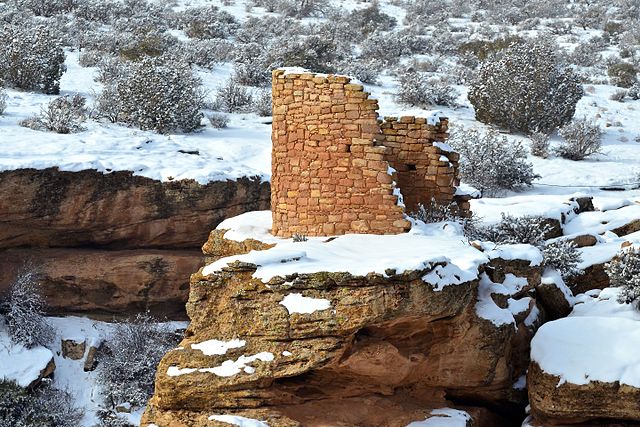The Pueblo II Period was the second pueblo period of the Ancestral Puebloans of the Four Corners region of the American southwest. During this period people lived in dwellings made of stone and mortar, enjoyed communal activities in kivas, built towers and dams for water conservation, and implemented milling bins for processing maize. Communities with low-yield farms traded pottery with other settlements for maize.
Agate House at Petrified Forest National Park in Arizona
Mesa Verde Pueblo II corrugated jars Source: National Park Service
Mesa Verde Pueblo II Mancos Black-on-White jar and ladle Source: National Park Service
Mesa Verde Pueblo II Mancos Black-on-White Pottery Source: National Park Service
The Ancestral Puebloans, also known as the Anasazi, were an ancient Native American culture that spanned the present-day Four Corners region of the United States, comprising southeastern Utah, northeastern Arizona, northwestern New Mexico, and southwestern Colorado. They are believed to have developed, at least in part, from the Oshara tradition, which developed from the Picosa culture. The people and their archaeological culture are often referred to as Anasazi, meaning "ancient enemies", as they were called by Navajo. Contemporary Puebloans object to the use of this term, with some viewing it as derogatory.
Cliff Palace in Mesa Verde National Park in Montezuma County, Colorado
White House Ruin Trail at the Canyon de Chelly National Monument in Apache County, Arizona
Horseshoe Tower in the snow at the Hovenweep National Monument
Pueblo Bonito, the largest of the Chacoan Great Houses, stands at the foot of Chaco Canyon's northern rim.








